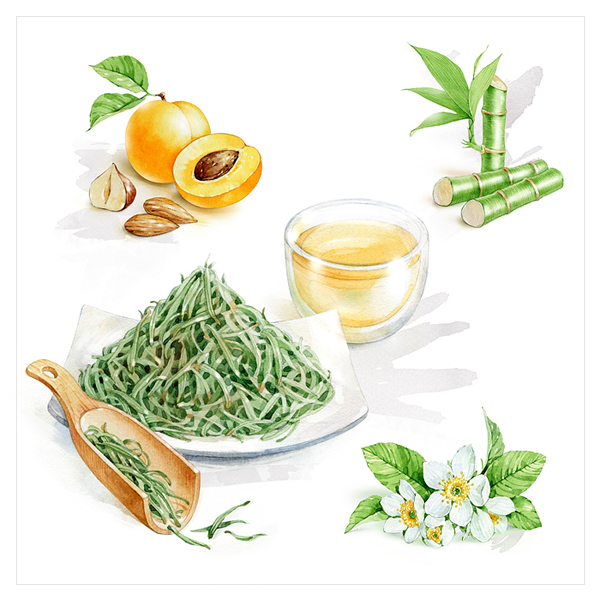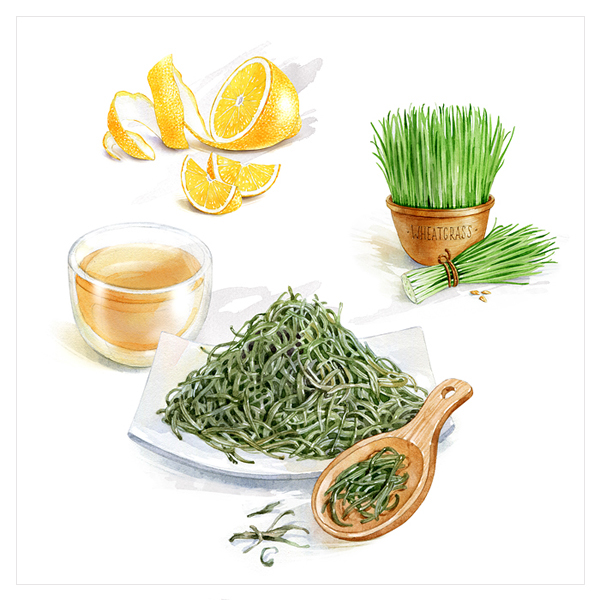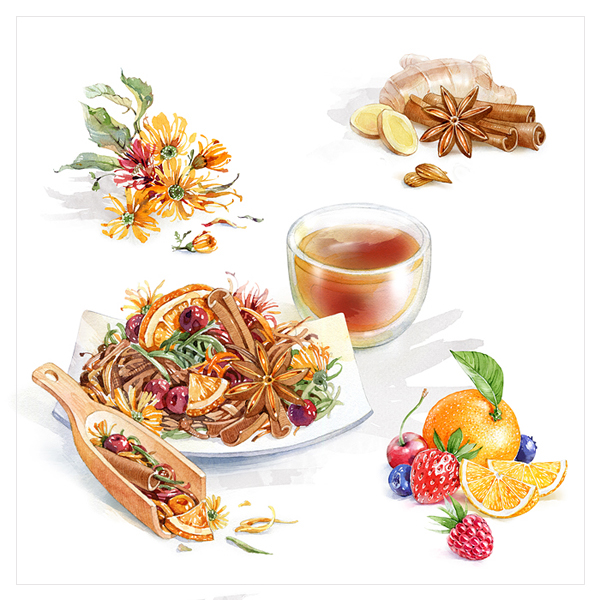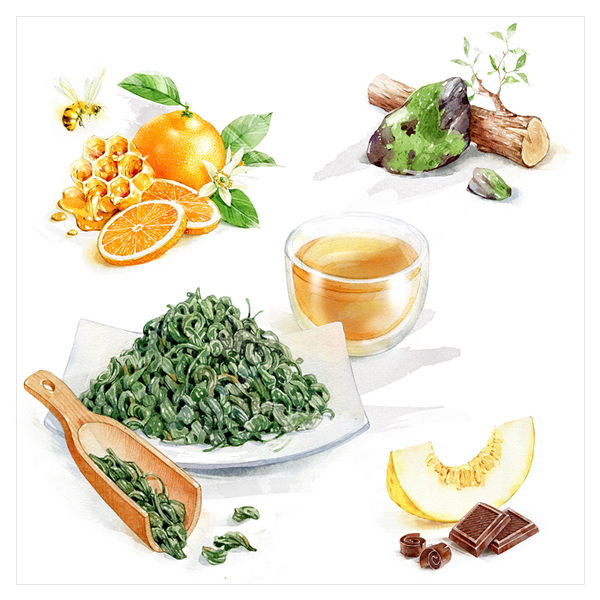
How to Tea: Tea Types,
A Quick Guide
Your favorite tea went on an exotic journey before ending up in your cup. Which tea nourishes your soul? What blends satiate your hot beverage cravings? Which brew makes you feel pampered? Read on and then experiment to fi nd your most sensational sip.
______

Black
Black tea has a wide array of fl avors, from full-bodied, strong, and aromatic to delicate, light, and dry. If you love your tea with milk, consider stronger varieties, such as English Breakfast and Assam. Leaves are withered until they’re pliable, rolled to affect fl avor and pungency, oxidized for several hours, and dried or fi red, giving the tea its dark appearance.

White
It’s light, delicate, and has a subtle fruity, sweet fi nish that makes it taste less bitter than other teas. Hand harvested when the leaves still sport fi ne white hairs (hence the tea’s name), the leaves are withered and dried in the sun or under a lamp, instead of being oxidized (the process by which leaves are bruised and exposed to the air). This accounts for Twinings® Pure White Tea’s fresh, leafy fl avor.

Green
Green tea is light-bodied—its subtle fl avors range from grassy to herbaceous. Either pan-fi red, steamed, or withered in the sunshine (it is not oxidized), the tea is often made up of the top two leaves and the bud of tea plant clusters.

Herbal
Herbal “teas” are not actually teas since they are not made from the leaves of the Camellia Sinensis plant. Instead, herbals take on the fl avors and aromas of dried
herbs, spices, seeds, roots, citrus or berry fruits, and fl owers. Twinings® uses many combinations, including fl oral camomile, spicy ginger, and fruity raspberry. Those who prefer these naturally caffeine-free selections call them “infusions” or “tisanes.”

Oolong
Twinings® Oolong Tea can embody a mélange of intense fl avors, from honey to citrus, from melon to chocolate, and from wood to moss. Creating those nuances is a precise endeavor: After they are picked, the leaves are bruised by being rolled several times in muslin sacks—this helps oxidize them. Whatever technique is used directly infl uences the tea’s fl avor profi le—for example, oolong can take on green tea characteristics or resemble light black teas.




